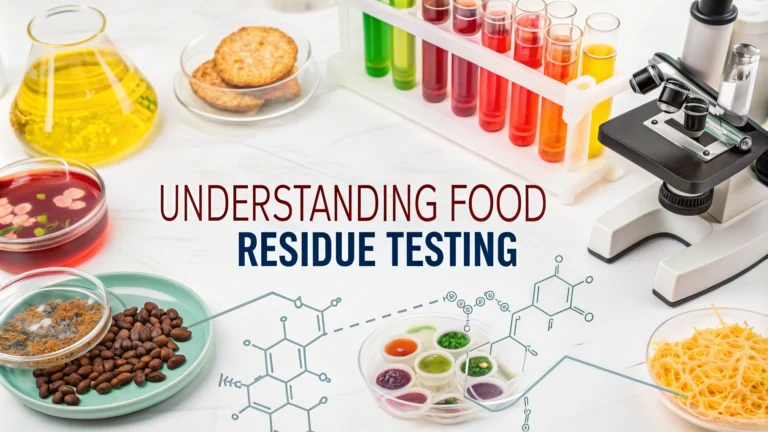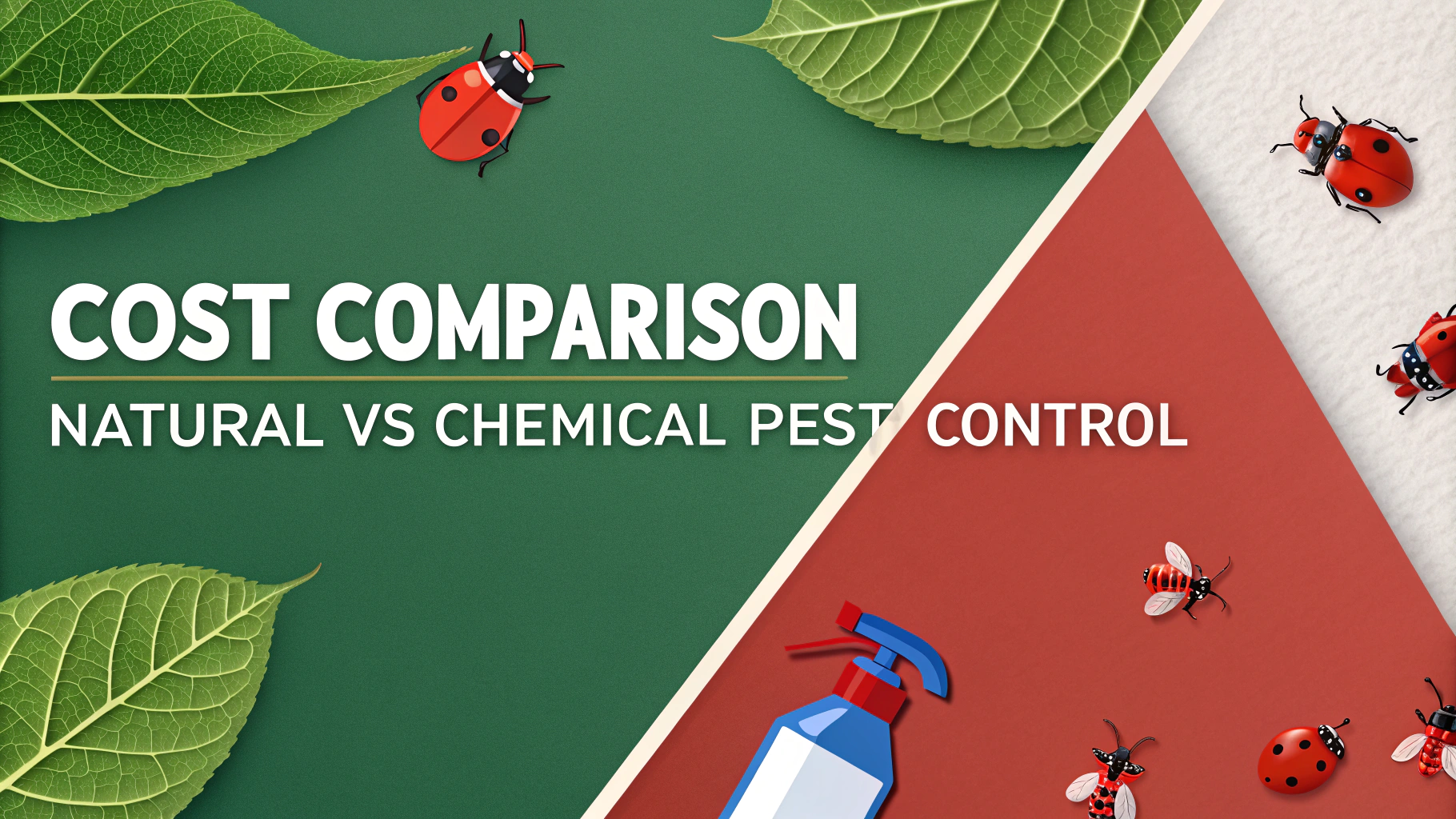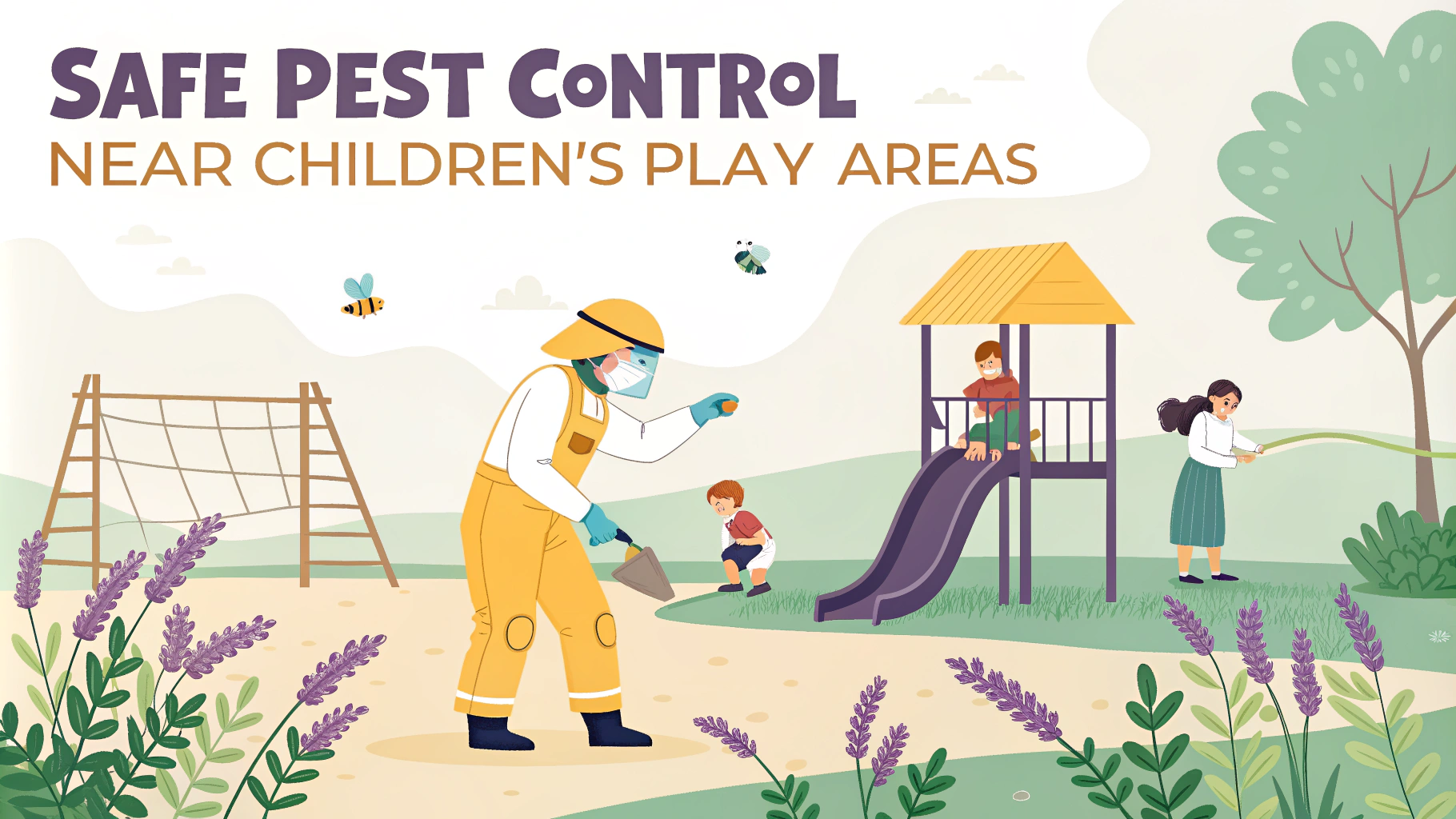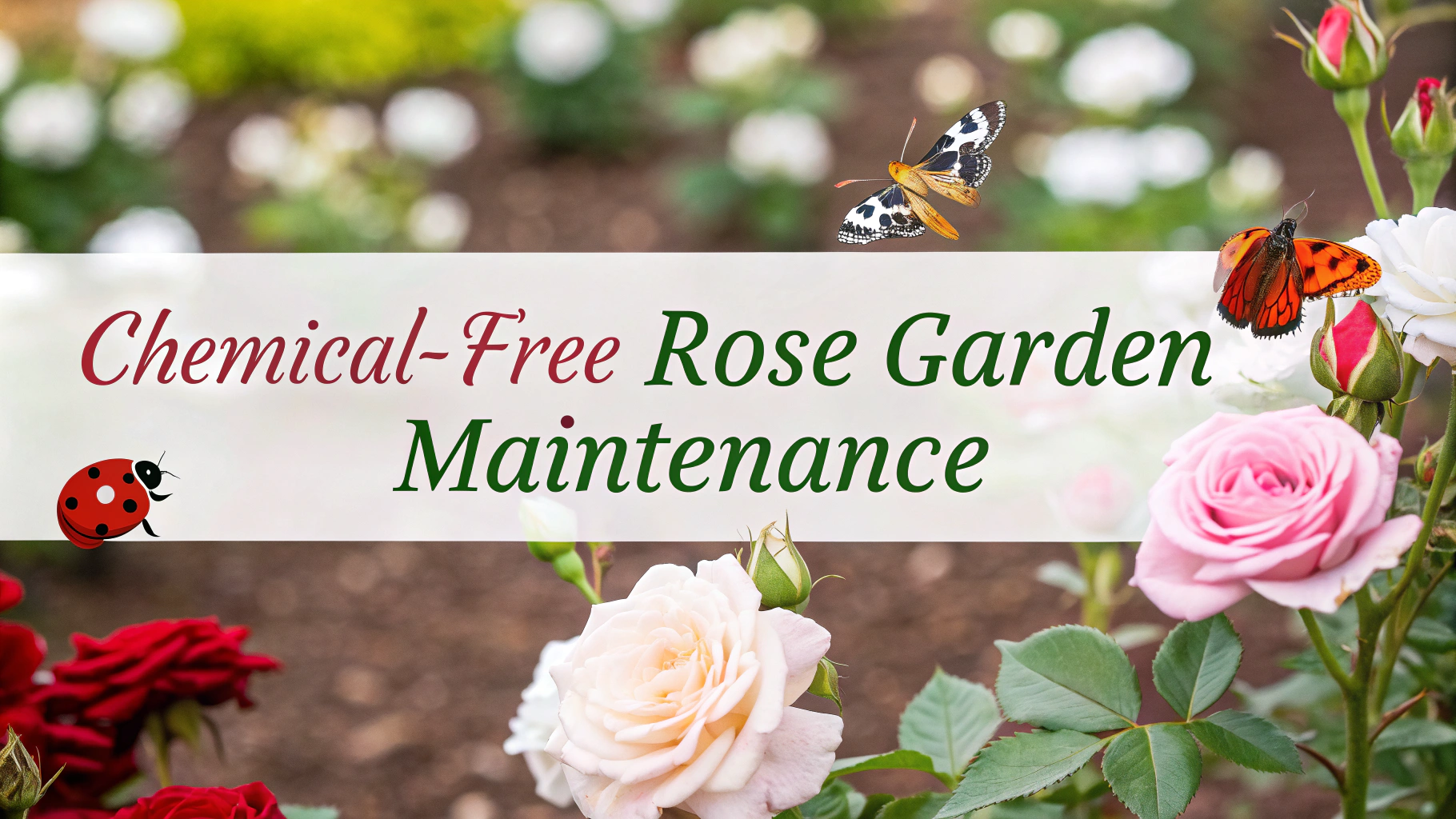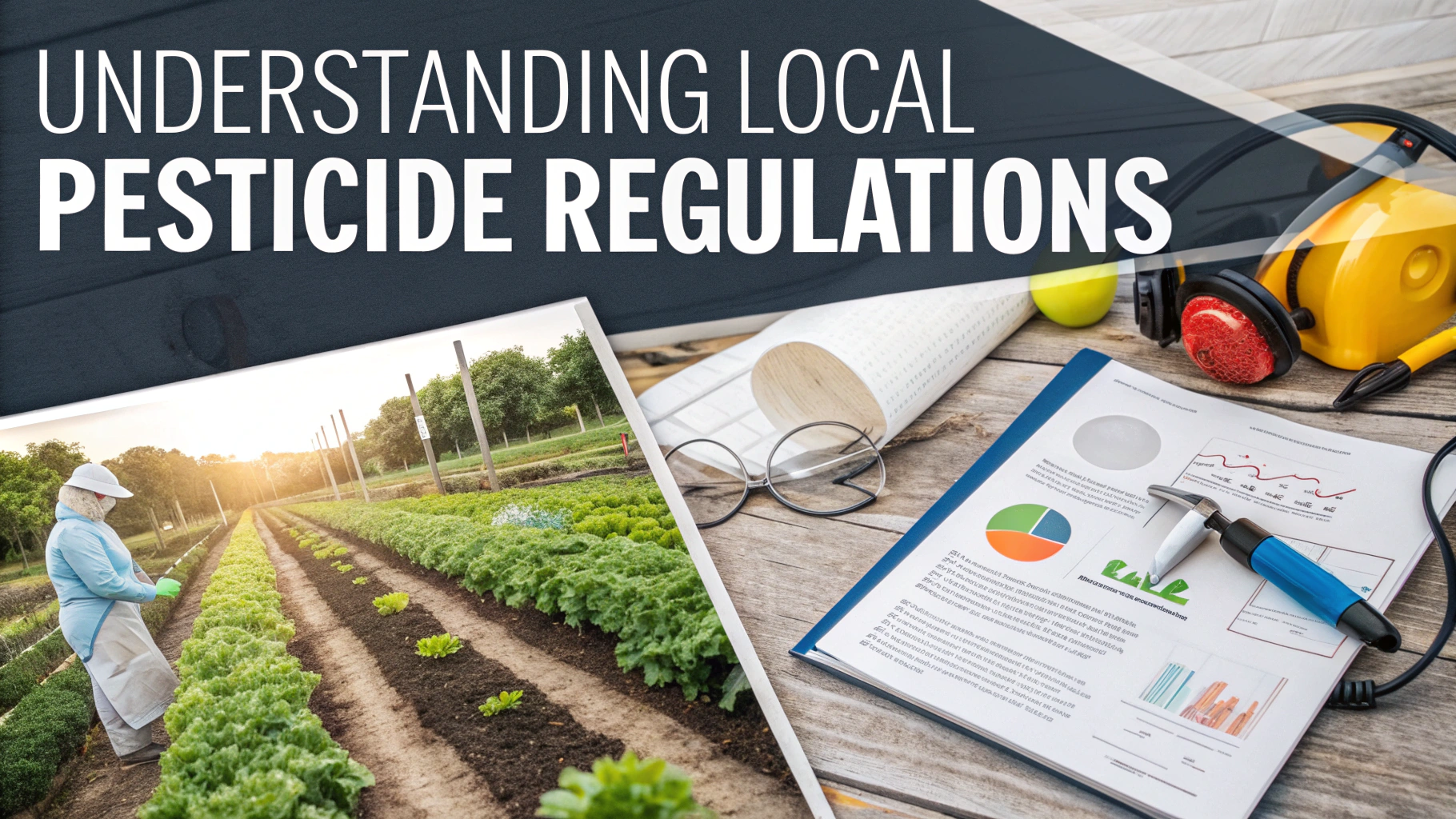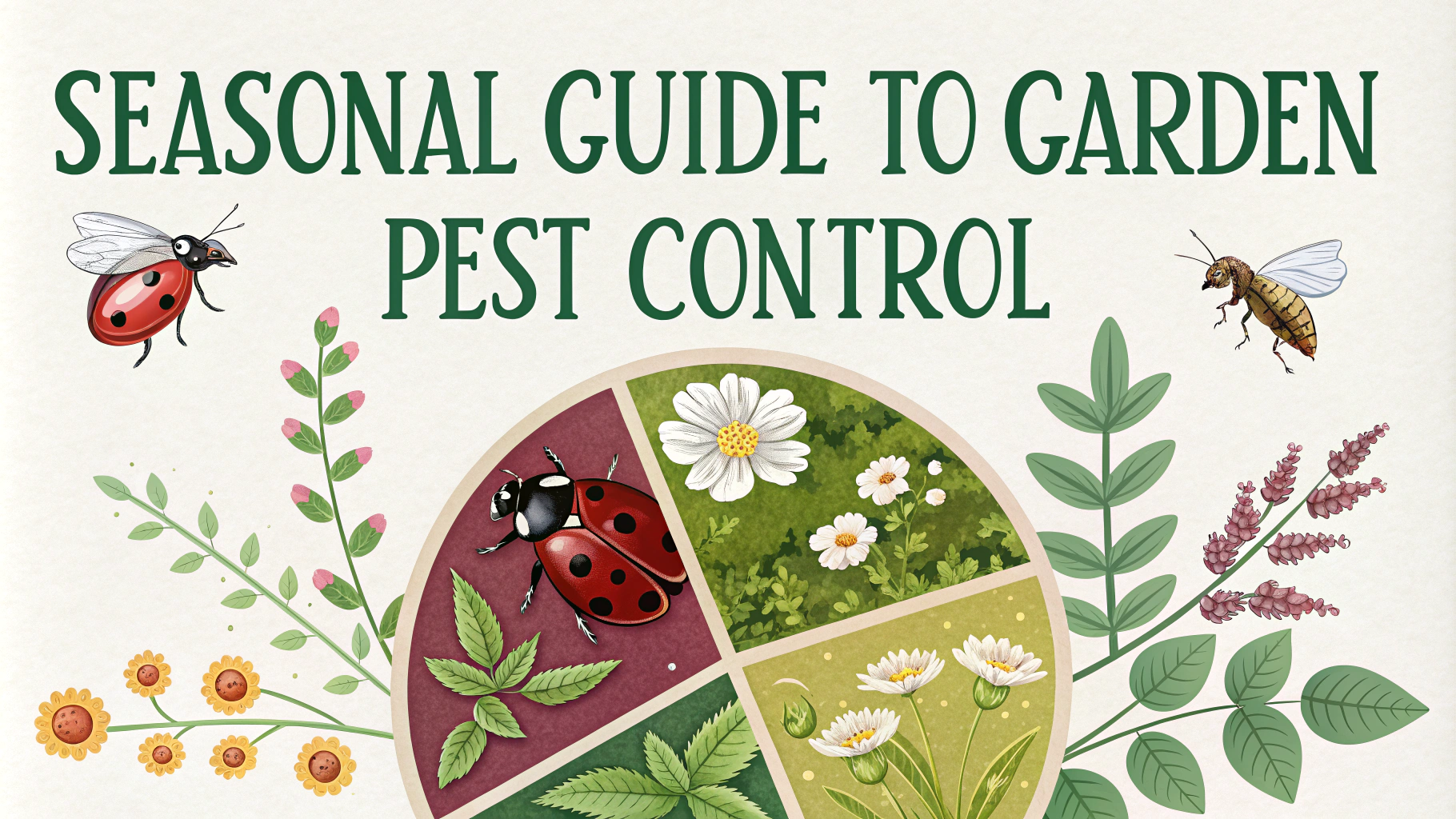Food residue testing helps ensure the safety of our food supply by detecting potentially harmful chemical residues like pesticides, veterinary drugs, and environmental contaminants.
Testing laboratories use advanced analytical methods including chromatography and mass spectrometry to measure trace amounts of chemical residues that may remain on food products.
Key Testing Methods
- LC-MS/MS (Liquid Chromatography with Tandem Mass Spectrometry)
- GC-MS (Gas Chromatography-Mass Spectrometry)
- QuEChERS (Quick, Easy, Cheap, Effective, Rugged, and Safe) extraction
Common Residues Tested
- Pesticides and herbicides
- Veterinary drug residues
- Environmental contaminants
- Heavy metals
- Mycotoxins
Testing programs typically focus on high-risk food products like fruits, vegetables, grains, dairy, and meat products.
Regulatory Standards
The FDA and EPA establish Maximum Residue Limits (MRLs) that define acceptable levels of chemical residues in food products.
Testing Process Steps
- Sample collection and preparation
- Extraction of residues from food matrix
- Clean-up to remove interfering compounds
- Analysis using specialized instruments
- Data interpretation and reporting
Tips for Food Producers
- Maintain detailed records of all chemical applications
- Follow pre-harvest intervals strictly
- Work with accredited testing laboratories
- Implement regular testing schedules
Contact Information for Testing Services
Contact AOAC International (www.aoac.org) for approved testing methods and laboratory recommendations.
| Organization | Purpose |
|---|---|
| FDA | Regulatory guidance and compliance |
| USDA | Agricultural testing programs |
| EPA | Pesticide residue limits |
Best Practices for Sample Collection
- Use clean, sterile containers
- Follow proper sampling protocols
- Maintain sample chain of custody
- Store samples at appropriate temperatures
Regular testing helps maintain food safety standards and ensures compliance with regulatory requirements.
Testing Frequency Guidelines
- Raw agricultural products: Monthly or per batch
- Processed foods: Quarterly
- High-risk products: Weekly or bi-weekly
- Import/export goods: Per shipment
Quality Control Measures
Laboratory Requirements
- ISO 17025 accreditation
- Participation in proficiency testing
- Regular equipment calibration
- Trained technical staff
Documentation
- Standard operating procedures (SOPs)
- Method validation records
- Quality control charts
- Analytical reports
Common Testing Challenges
- Matrix interference effects
- Complex sample preparation
- Multiple residue analysis
- Low detection limits
- Time constraints
Emerging Technologies
- Rapid screening methods
- Portable testing devices
- Automated sample preparation
- Artificial intelligence for data analysis
Conclusion
Food residue testing plays a crucial role in protecting public health and ensuring food safety compliance. Success depends on proper sampling, accurate analysis, and adherence to regulatory standards. Regular monitoring and testing help maintain consumer confidence and meet international trade requirements.
Producers should stay informed about current testing requirements and work closely with certified laboratories to develop appropriate testing programs for their products.
FAQs
- What is food residue testing for pesticides?
Food residue testing is a scientific analysis that measures the levels of pesticide compounds remaining on or in agricultural products, ensuring they are within legal safety limits established by regulatory authorities. - Which methods are commonly used for pesticide residue testing?
The most common methods include Gas Chromatography-Mass Spectrometry (GC-MS), Liquid Chromatography-Mass Spectrometry (LC-MS), and Multi-residue methods (MRM) that can detect multiple pesticide compounds simultaneously. - What are Maximum Residue Limits (MRLs)?
MRLs are the highest levels of pesticide residues legally tolerated in or on food when pesticides are applied correctly according to Good Agricultural Practice (GAP). - How often should food products be tested for pesticide residues?
Testing frequency depends on regulatory requirements, risk assessment, and company policies, but typically occurs during pre-harvest, post-harvest, and at various points in the supply chain. - What types of pesticides are commonly tested for?
Testing typically covers organophosphates, organochlorines, carbamates, pyrethroids, and newer classes of pesticides, depending on the crop type and regional regulations. - How are samples collected for pesticide residue testing?
Samples are collected following standardized protocols, ensuring they are representative of the entire lot, properly labeled, and maintained at appropriate conditions during transport to the laboratory. - What happens if pesticide residues exceed legal limits?
Products exceeding MRLs are typically rejected, destroyed, or recalled if already in the market, and investigations are conducted to determine the cause of contamination. - Which foods are most commonly tested for pesticide residues?
Fresh fruits and vegetables, grains, herbs, spices, and processed foods derived from these products are most frequently tested due to their higher likelihood of pesticide application. - How long does pesticide residue testing take?
Standard testing typically takes 3-5 working days, though rush analysis can be completed in 24-48 hours when necessary. - What certifications should a pesticide residue testing laboratory have?
Laboratories should be ISO/IEC 17025 accredited and recognized by relevant national authorities, with demonstrated proficiency in pesticide residue analysis.
